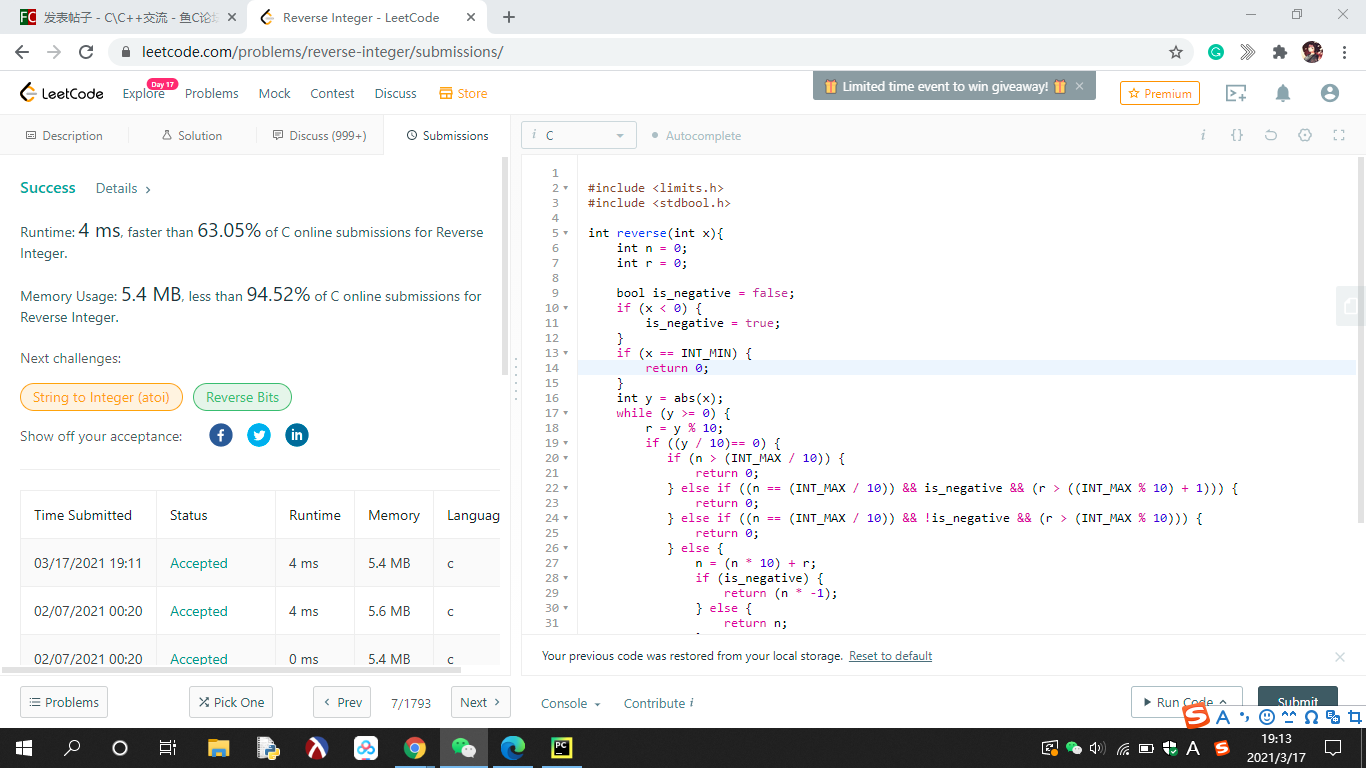|
|
马上注册,结交更多好友,享用更多功能^_^
您需要 登录 才可以下载或查看,没有账号?立即注册
x
- 7. Reverse Integer #Easy
- Given a signed 32-bit integer x, return x with its digits reversed. If reversing x causes the value to go outside the signed 32-bit integer range [-231, 231 - 1], then return 0.
- Assume the environment does not allow you to store 64-bit integers (signed or unsigned).
- Example 1:
- Input: x = 123
- Output: 321
- Example 2:
- Input: x = -123
- Output: -321
- Example 3:
- Input: x = 120
- Output: 21
- Example 4:
- Input: x = 0
- Output: 0
-
- Constraints:
- -231 <= x <= 231 - 1
C
- #include <limits.h>
- #include <stdbool.h>
- int reverse(int x){
- int n = 0;
- int r = 0;
-
- bool is_negative = false;
- if (x < 0) {
- is_negative = true;
- }
- if (x == INT_MIN) {
- return 0;
- }
- int y = abs(x);
- while (y >= 0) {
- r = y % 10;
- if ((y / 10)== 0) {
- if (n > (INT_MAX / 10)) {
- return 0;
- } else if ((n == (INT_MAX / 10)) && is_negative && (r > ((INT_MAX % 10) + 1))) {
- return 0;
- } else if ((n == (INT_MAX / 10)) && !is_negative && (r > (INT_MAX % 10))) {
- return 0;
- } else {
- n = (n * 10) + r;
- if (is_negative) {
- return (n * -1);
- } else {
- return n;
- }
- }
- } else {
- n = (n * 10) + r;
- y = y / 10;
- }
- }
- return -1;
- }

!!!good style -> always return sth.
!!!special case -> INT_MIN
!!!negative sign -> bool is_negative
!!!integer overflow -> check before reversing ur last digit |
|
 ( 粤ICP备18085999号-1 | 粤公网安备 44051102000585号)
( 粤ICP备18085999号-1 | 粤公网安备 44051102000585号)